Interpretation of the Meteorological Environment ChangesExperienced By MSL During Mission TraverseUsing REMS and MRAMS
- 1Centro Astrobiología (CAB-INTA-CSIC), Instrumentation, Spain (maria.ruizperez@cab.inta-csic.es)
- 2Southwest Research Institute, Boulder CO 80302, USA
- 3Lunar and Planetary Institute, Houston, TX, USA
- 4Jet Propulsion Laboratory/California Institute of Technology, Pasadena, CA, USA
Abstract:
This work aims to examine the atmospheric pres-sure, ground and air temperatures and relative humid-ity obtained by The Rover Environmental Monitoring Station REMS on its journey from the Mars Science Laboratory (MSL) landing site to its current position on the slopes of Mount Sharp. It seeks to extend the work done by Pla-García et al. [1] and Rafkin et al. [2], studying the evolution of the meteorology during the rover's traverse. The results help to better under-stand the martian meteorology inside Gale Crater, re-vealing changes in pressure and temperature driven by the change in altitude of the rover and meteorological cycles, and confirming the hypothesis of Rafkin et al. [2] about the existence of a pocket of cold air at the bottom of the crater.
2. Methods
We report 3457 sols observations performed by REMS from Martian Year (MY) 31 to 36 for air tem-perature (Figure 1), daily maximum relative humidity (Figure 2), water vapor VMR (Figure 3) and daily mean atmospheric pressure vs elevation (Figure 4).
In an effort to better understand the different me-teorological environments observed inside Gale crater, the Mars Regional Atmospheric Modeling System (MRAMS) was applied to the landing site re-gion using nested grids with a spacing of 330 meters on the innermost grid that is centered over the landing site. MRAMS is ideally suited for this investigation; the model is explicitly designed to simulate Mars’ at-mospheric circulations at the mesoscale and smaller with realistic, high-resolution surface properties. The model is run for 4 sols with 4 grids and then the 3 ad-ditional grids are added and run for at least 3 more sols. Initialization and boundary condition data are taken from a NASA Ames GCM simulation with col-umn dust opacity driven by zonally-averaged TES re-trievals. Vertical dust distribution is given by a Con-rath-v parameterization that varies with season and latitude.
3. Results
Surface pressure drops when climbing Mt Sharp (Figure 4) since the atmosphere column above a unit area shortens as altitude increases [4].
MRAMS results are shown to be in good agree-ment with observations (Figures 5 and 6) when con-sidering the uncertainties in the observational data set. The good agreement provides justification for utiliz-ing the model results to investigate the meteorological environment changes experienced by the rover during mission traverse.
As expected, both REMS and MRAMS show nighttime air temperatures up to 10 K warmer for re-cent years (MY35-36) compared to postlanding years (MY31-32), when the rover was exposed to cold air masses at the crater floor (Figure 5), and lower pres-sure (Figure 6).
During MY31-32 (first and second MSL years), the rover was in the crater floor, completely exposed to the strong N-W downslope (mostly dynamically driven) winds from Peace Vallis during Ls 225-315 [2]. The overturning circulation aloft due to upslope winds during daytime along Gale’s northern rim and Mt. Sharp creates an intense subsidence area in the crater floor area, suppressing the PBL [5]. During the MY33 (third MSL year), the rover climbed the slopes of crater Mt Sharp (Figure 6) and was less exposed to the high subsidence area and to the strong N-W downslope wind flow from Peace Vallis. This new en-vironment condition should favor the dust devil activ-ity. After MY34 (fourth MSL year), the rover could be much more exposed to "free" (and putative wet) atmosphere, that is, outside Gale crater floor air masses that could explain, among other features, the relative humidity and water vapor VMR increment during mission traverse (Figures 2 and 3).
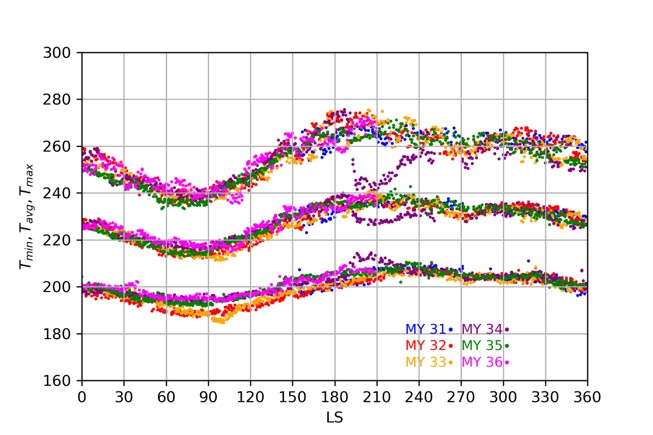
Figure 1: Interannual and seasonal evolution of daily maximum, average and minimum air temperature during the first 3457 sols of the Mars Science Laboratory mission. Color code is used to represent different Martian Years.
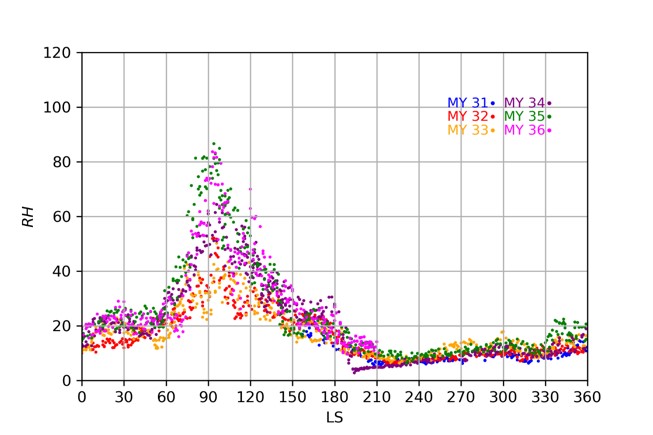
Figure 2: Seasonal evolution of daily maximum relative humidity during the first 3457 sols of the Mars Science Laboratory mission. Color code is used to represent different Martian Years.
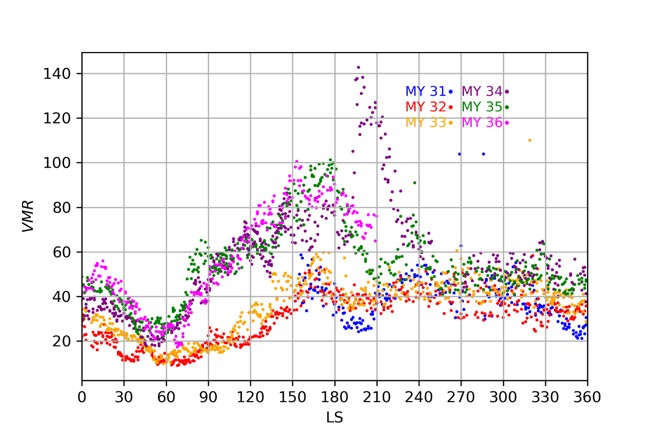
Figure 3: Same as Fig. 3, but for daily water vapor VMR.
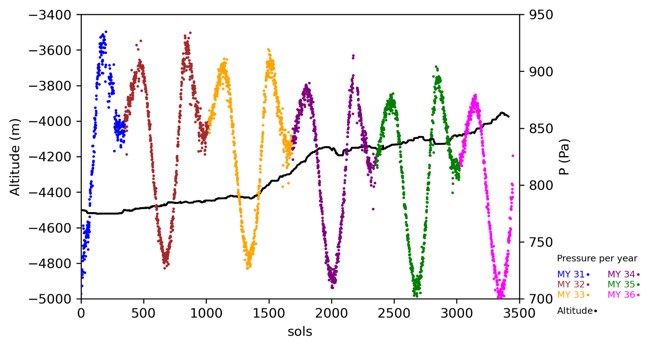
Figure 4: Seasonal evolution of daily mean atmospheric pressure vs elevation changes during the first 3457 sols of the Mars Science Laboratory mission. Color code is used to represent different Martian Years in the pressure.
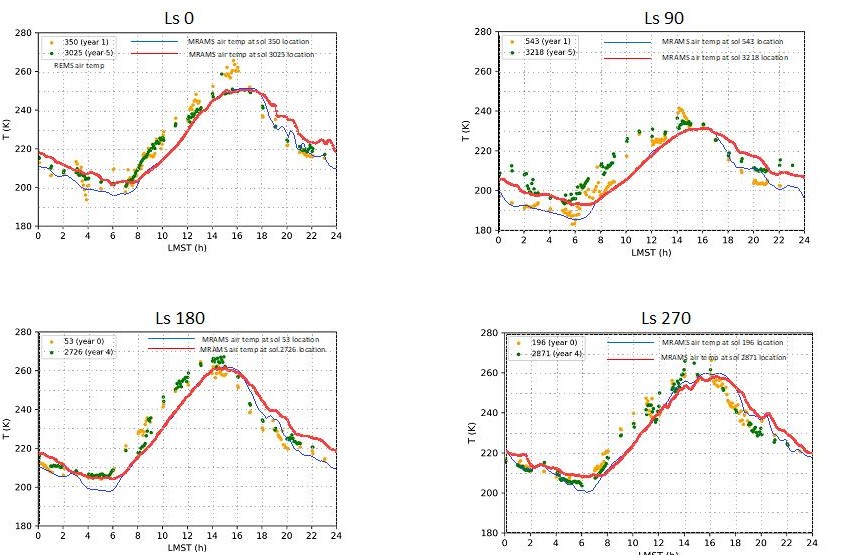
Figure 5: MRAMS model predictions and REMS observations of diurnal air temperature at solstices and equinoxes of MSL years 0-1 (MY31-32) vs MSL years 4-5 (MY35-36). As expected, air temperature during nighttime is up to 10 K warmer at years 4-5 locations (600 m higher in elevation compared to landing site), far away from the cold air masses of the crater floor.
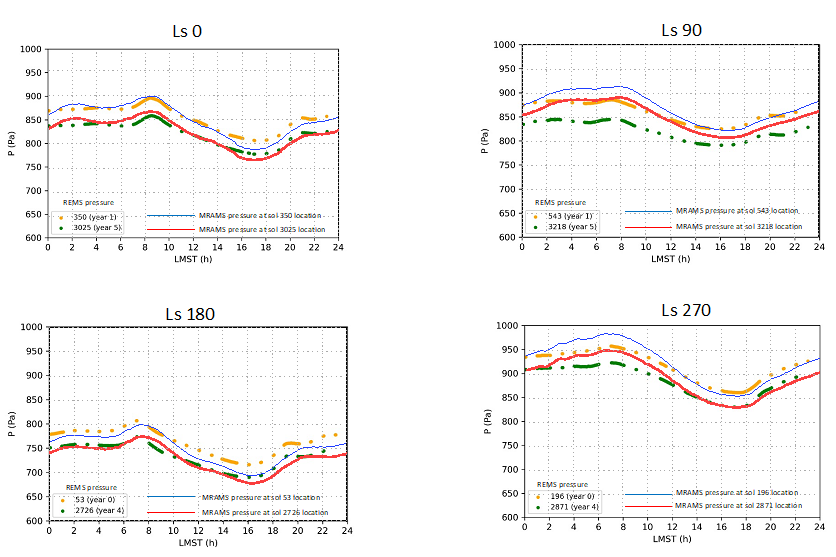
Figure 6: Same as Fig. 7, but for daily mean atmospheric pressure.
References:
[1] Pla-Garcia et al. (2016), Icarus. [2] Rafkin et al. (2016) [3] Gómez-Elvira, J., et al. (2012), Space Science Reviews, 170(1-4), 583-640. [4] Pascal, Blaise (1648) Oeuvres completes. [5] Moores et al. (2015). Icarus, 249, 129-142.
How to cite: Ruíz-Pérez, M., Pla-García, J., Rafkin, S., Martínez, G., de la Torre, M., Gómez-Elvira, J., and Rodríguez-Manfredi, J.: Interpretation of the Meteorological Environment ChangesExperienced By MSL During Mission TraverseUsing REMS and MRAMS, Europlanet Science Congress 2022, Granada, Spain, 18–23 Sep 2022, EPSC2022-478, https://doi.org/10.5194/epsc2022-478, 2022.

